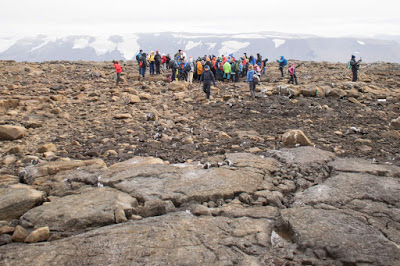Alaska’s sea ice completely melted for first time in recorded history
 |
| Dahr Jamail 10/09/2019 |
“Even if we can’t escape its consequences, it is not too late to escape the mindset that brought us here.” —Alice O’Keeffe, reviewing This Is Not a Drill
The country of Iceland has held a funeral for its first glacier lost to the climate crisis. The once massive Okjökull glacier, now completely gone, has been commemorated with a plaque that reads: “A letter to the future. Ok is the first Icelandic glacier to lose its status as a glacier. In the next 200 years all our glaciers are expected to follow the same path. This monument is to acknowledge that we know what is happening and what needs to be done. Only you know if we did it.”
This reality is reverberating across the globe, far beyond Iceland. Even when no literal funeral is being held, we are, in a sense, witnessing an ongoing funeral for the world we once knew.
July was the hottest month ever recorded on Earth since record keeping began in 1880. Nine out of the 10 hottest Julys ever recorded have occurred since 2005, and July was the 43rd consecutive July to register temperatures above the 20th century average.
In Greenland, scientists were stunned by how rapidly the ice sheet is melting, as it was revealed the ice there was not expected to melt like this until 2070. The melt rate has been called “unprecedented,” as the all-time single-day melt record was broken in August as the ice sheet lost a mind-bending 12.5 billion tons of water in one day. It is worth remembering that the Greenland ice sheet contains enough ice to increase global sea levels by 20 feet, and it is now predicted that it will lose more ice this year than ever before.
Also for the first time in recorded history, Alaska’s sea ice has melted completely away. That means there was no sea ice whatsoever within 150 miles of its shores, according to the National Weather Service, as the northernmost state cooked under record-breaking heat through the summer.


